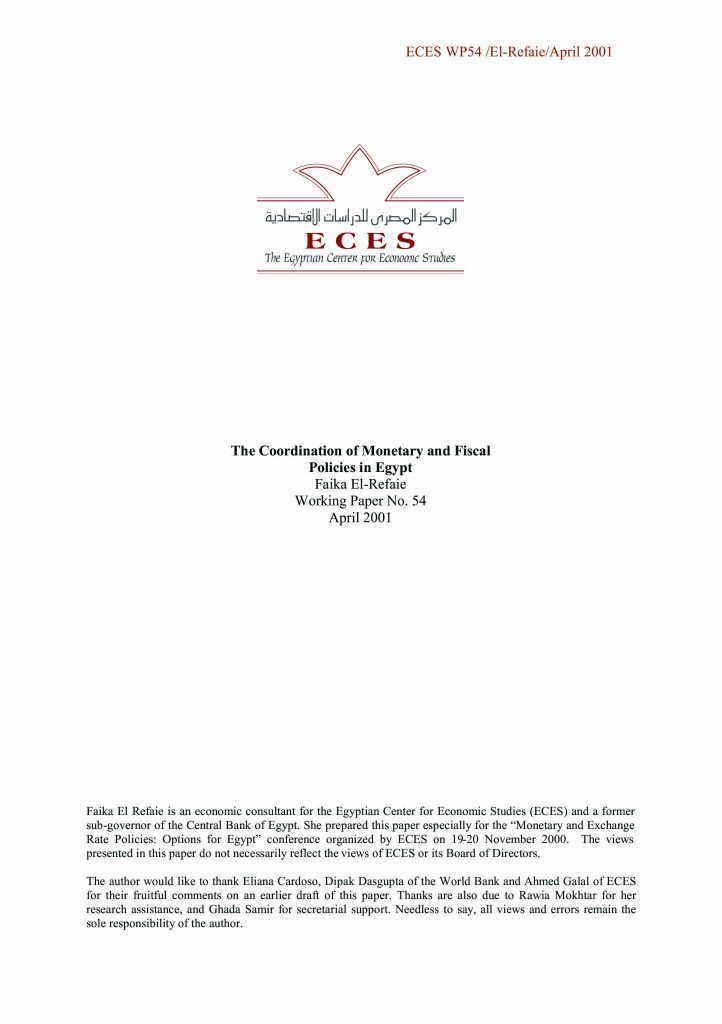Abstract:
This paper reviews the rationale for the coordination of fiscal and monetary policies and operations, and the pillars on which such coordination rests. It assesses the coordination of monetary and fiscal policies in Egypt during the 1990s in terms of objectives, instruments, and operational procedures, and looks for the best mode of coordination in the future, given the depth of the financial markets and the exchange rate regime.
The paper finds that while Egypt’s coordination proved successful up to 1997/1998 in achieving financial stability and high economic growth, the coordination onward was not as effective. The restrained fiscal policy became an expansionary one, bringing the targeted budget deficit to GDP up from 1 percent to a high level of 4.2 percent in 1998/1999. Monetary policy continued to be restrictive with high short-term injections of liquidity. This resulted in the deepening of stagnation in the economy, instability in the exchange rate as well as a sharp reduction in international reserves.
These developments, along with the initiation of the new Public Debt Management Program in September of 2000, plans for a new unit at the Ministry of Finance to act as a fiscal agent for the government, and the move since June 2000 towards a flexible exchange rate regime, have brought to the forefront the issue of coordination between monetary and fiscal policies in Egypt. Looking ahead, the paper proposes a mode of monetary and fiscal policy coordination that suits such recent developments.

